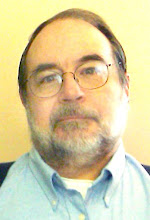We use new tools to achieve traditional goals
This has been quite a month at The Oneida Daily Dispatch and all Journal Register Co. news organizations.
In this newsroom and others, we've been working hard trying to use unfamilair tools to do our jobs.
Responding to the challenge of JRC CEO John Paton, we've produced this edition using free and nearly free software and other tools.
Why?
It's no secret that the media world is changing. While newspapers reamin profitable and effective advertising vehicles, there's no question more and more people want to receive their news over the Internet.
But clearly they still want to receive news. Almost overlooked in the newspaper doom and gloom stories is the simple fact that more people are seeking out news than ever before.
And how does that news, especially local news get on the Internet? Do Google reporters attend county supervisor meetings? Has the Huffington Post ever done a feature story on your award-winning daughter?
Local news comes from local news organizations. An local news is more than just posting public officials' press release on a website.
Quality local news on the Internet or on the Web takes professional reporters and editors committed to gathering facts in a fair and balanced manner. To do so they must be ready to field accusations from people who feel strongly about issues that they are showing favoritism to the other side. The middle road is often narrow and hard to follow. In a perfectly-handled controversy, a news organization is accused by each side of favoring the other.
When I started in journalism 30 years ago, my editor told me something that's stuck with me. "Listen, kid" he said. "This paper is 95 years old. For most of its history it got by just fine without me; it can sure get by without you. What it can't get by without is the readers. No readers, no paper; it's as simple as that. Don't print what you want; don't print what the public officials want. Print what the readers want; print what they need. That's the secret of news."
With today's edition, we rededicate ourselves to this concept. Today we call it "crowd sourcing" and we use new tools such as social media and e-mail to do it, but the concept is as true as it was in my editor's time and in Ben Franklin's time.
But we pledge to never lose sight of the fact that this newspaper - printed on paper or posted online - is a part of this community.
In this newsroom and others, we've been working hard trying to use unfamilair tools to do our jobs.
Responding to the challenge of JRC CEO John Paton, we've produced this edition using free and nearly free software and other tools.
Why?
It's no secret that the media world is changing. While newspapers reamin profitable and effective advertising vehicles, there's no question more and more people want to receive their news over the Internet.
But clearly they still want to receive news. Almost overlooked in the newspaper doom and gloom stories is the simple fact that more people are seeking out news than ever before.
And how does that news, especially local news get on the Internet? Do Google reporters attend county supervisor meetings? Has the Huffington Post ever done a feature story on your award-winning daughter?
Local news comes from local news organizations. An local news is more than just posting public officials' press release on a website.
Quality local news on the Internet or on the Web takes professional reporters and editors committed to gathering facts in a fair and balanced manner. To do so they must be ready to field accusations from people who feel strongly about issues that they are showing favoritism to the other side. The middle road is often narrow and hard to follow. In a perfectly-handled controversy, a news organization is accused by each side of favoring the other.
When I started in journalism 30 years ago, my editor told me something that's stuck with me. "Listen, kid" he said. "This paper is 95 years old. For most of its history it got by just fine without me; it can sure get by without you. What it can't get by without is the readers. No readers, no paper; it's as simple as that. Don't print what you want; don't print what the public officials want. Print what the readers want; print what they need. That's the secret of news."
With today's edition, we rededicate ourselves to this concept. Today we call it "crowd sourcing" and we use new tools such as social media and e-mail to do it, but the concept is as true as it was in my editor's time and in Ben Franklin's time.
But we pledge to never lose sight of the fact that this newspaper - printed on paper or posted online - is a part of this community.
 RSS
RSS

